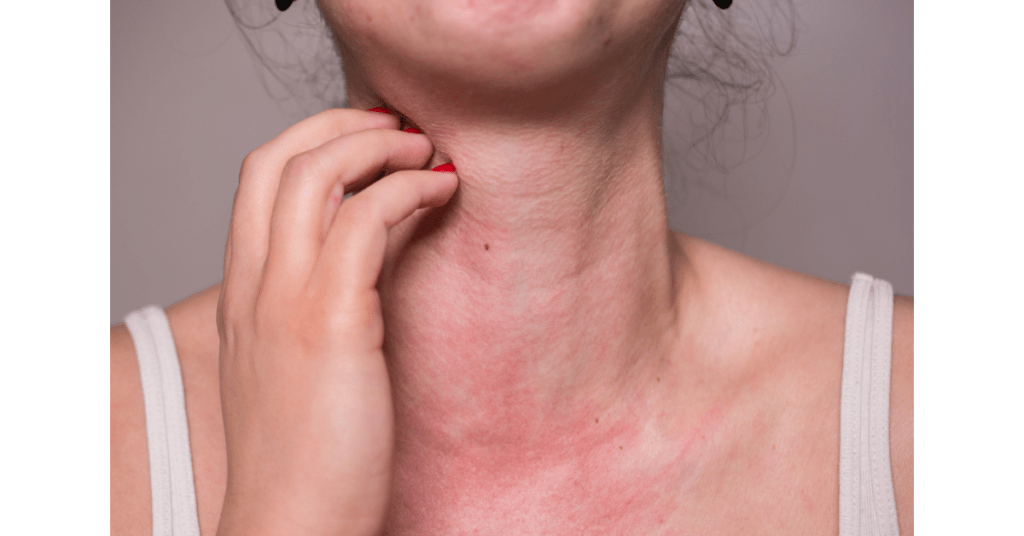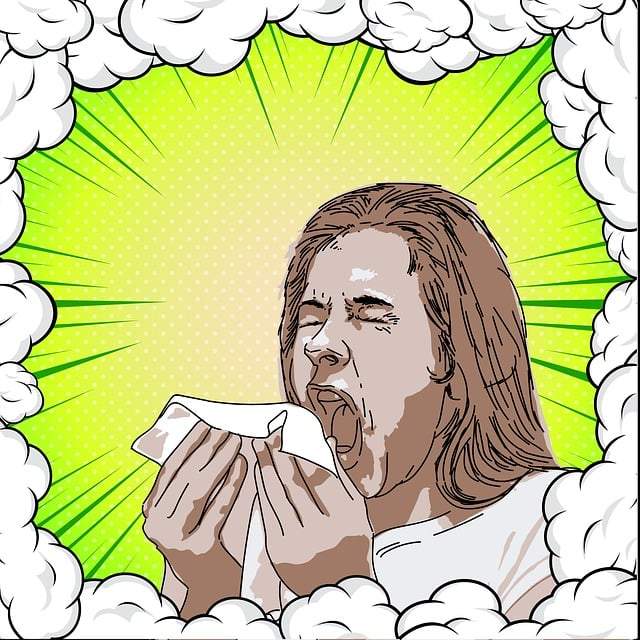Ragweed, Mold & More: Get Ready for Fall Allergies
Outline of the Article:
1. Introduction
2.What Causes Fall Allergies?
3. Symptoms of Fall Allergies
4. Preparing for Fall Allergies
5. Allergy-Proofing Your Home
7. Natural Remedies
8. The Importance of Allergy Testing
9. Allergy Shots
10. Fall Allergies in Children
11. Managing Fall Allergies at School and Work
12. Coping with Severe Allergies
13. Fall Allergies vs. COVID-19
14. Enjoying Fall Despite Allergies
15. Conclusion
16. FAQS
Introduction
As the leaves change colors and the air turns crisp, many people eagerly anticipate the beauty of fall. However, for some, this season brings a different kind of anticipation – the onset of fall allergies. Ragweed, mold, and other triggers can turn this picturesque season into a sneezing, itching, and coughing ordeal. In this article, we’ll explore the world of fall allergies, their causes, symptoms, and most importantly, how to prepare for them.
What Causes Fall Allergies?
Fall allergies are primarily triggered by environmental factors. Ragweed is one of the most notorious culprits. This plant releases tiny pollen grains into the air, causing sneezing, runny noses, and itchy eyes. Mold spores, which thrive in damp, decaying vegetation, are another significant trigger. These allergens can become airborne and affect sensitive individuals.
Fall allergies are a common seasonal woe for many individuals. The change in weather, vegetation, and outdoor allergen levels can trigger a variety of allergic symptoms. Here’s a comprehensive look at what causes fall allergies:
1. Ragweed Pollen:
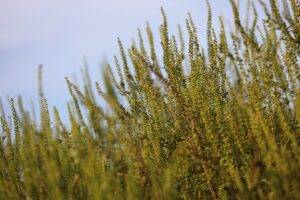
Ragweed is perhaps the most significant contributor to fall allergies. There are multiple species of ragweed, but common ragweed and giant ragweed are particularly problematic.
Ragweed plants release vast amounts of pollen into the air from late summer to early fall, with the peak occurring in September. The wind can carry this lightweight pollen for long distances.
When inhaled, ragweed pollen can trigger allergic reactions, leading to symptoms such as sneezing, runny or stuffy nose, itchy or watery eyes, and throat irritation.
2. Mold Spores:
Mold allergies can flare up during the fall as well. Mold spores are present in the outdoor environment year-round, but they can multiply in damp and decaying organic matter, which becomes more abundant in the fall.
Mold spores are released into the air when mold colonies reproduce. Inhaling these spores can lead to allergic reactions.
Common sources of mold spores in the fall include fallen leaves, compost piles, and decaying vegetation.
3. Other Allergens:
While ragweed and mold are primary culprits, other allergens can also play a role in fall allergies.
Dust mites and pet dander can become more problematic in the fall as people spend more time indoors with closed windows and less ventilation.
Allergens from indoor sources, like dust, can be stirred up during cleaning and trigger symptoms.
4. Climate and Weather Conditions:
The fall season can bring about changes in weather and climate that influence allergen levels. Cooler temperatures and increased moisture in some regions can encourage mold growth.
Wind patterns can transport pollen and mold spores over long distances, affecting areas that might not have
local sources of these allergens.
5. Cross-Reactivity:
Some individuals may experience cross-reactivity between allergens. For example, if you’re allergic to both ragweed pollen and certain fruits or vegetables, eating those foods can trigger oral allergy syndrome, where your body reacts to the proteins in those foods similarly to ragweed pollen.
6. Personal Allergen Sensitivity:
Allergies are highly individual, and not everyone will be affected by the same allergens or to the same degree. Some people may have heightened sensitivity to specific fall allergens.
Understanding the causes of fall allergies is essential for effective management. Allergy sufferers can take proactive steps to minimize exposure, such as keeping windows closed, using air purifiers, and staying informed about pollen forecasts. For those with severe or persistent symptoms, consulting with an allergist can provide personalized advice and treatment options to help manage fall allergies and improve overall quality of life during this beautiful but allergen-laden season.
Symptoms of Fall Allergies:
Fall allergies often manifest with a variety of uncomfortable symptoms, including sneezing, nasal congestion, itchy throat, and watery eyes. These symptoms can make daily activities a challenge, affecting work, school, and overall quality of life. Therefore, it’s crucial to be well-prepared for the fall allergy season.
here is a detailed descriptions of the symptoms commonly associated with fall allergies:
Sneezing:
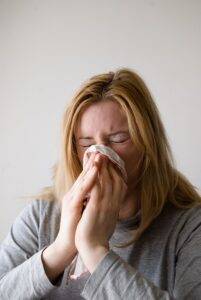
One of the hallmark symptoms of fall allergies is frequent and sudden sneezing. The immune system responds to allergens, like ragweed pollen or mold spores, by releasing histamines, which can irritate the nasal passages, leading to sneezing.
Runny or Stuffy Nose:
Allergic rhinitis, often referred to as “hay fever,” can cause a runny or stuffy nose. The nasal passages become inflamed and produce excess mucus, leading to these symptoms. The discharge may be clear and watery.
Itchy or Watery Eyes:
Allergic conjunctivitis is a common symptom of fall allergies. It can cause itching and redness in the eyes, along with excessive tearing. This occurs when allergens come into contact with the sensitive tissues of the eyes.
Throat Irritation:
Postnasal drip is a result of excess mucus running down the back of the throat. This can lead to a scratchy or sore throat. It’s often accompanied by a persistent need to clear the throat or cough.
Coughing:
Allergic coughing is usually triggered by postnasal drip. The body attempts to clear the throat and airways, which can result in a persistent, dry, or mildly productive cough.
Fatigue:
Dealing with the persistent discomfort and symptoms of fall allergies can be tiring. Fatigue is a common secondary symptom. Allergies can disrupt sleep and affect overall energy levels.
Headache:
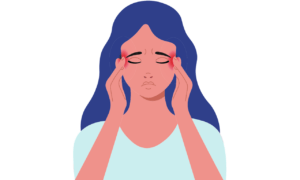
Sinus congestion and pressure can lead to headaches. These headaches are often felt as a dull, aching pain around the forehead, eyes, and cheeks.
Ear Discomfort:
Eustachian tubes connect the middle ear to the back of the throat, and they can become blocked due to nasal congestion. This can lead to ear discomfort, a feeling of fullness, or even popping sensations.
Wheezing and Shortness of Breath:
Individuals with asthma or pre-existing respiratory conditions may experience worsened symptoms during fall allergy season. Allergen exposure can trigger wheezing, shortness of breath, and chest tightness.
Skin Reactions:
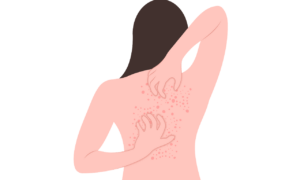
Some people may develop skin reactions due to fall allergens. This can include hives, which are itchy, raised, and red welts on the skin, or a worsening of eczema in individuals with this condition.
Sinus Pain:
Sinus congestion and inflammation can lead to sinus pain or sinusitis. This condition can cause facial pain, pressure, and a feeling of fullness in the cheeks and forehead.
Difficulty Concentrating:
The combination of allergy symptoms, especially those affecting the head, can make it challenging to concentrate and think clearly.
It’s important to remember that not everyone will experience all of these symptoms, and their severity can vary from person to person. Additionally, fall allergies can be managed with the help of allergists who can diagnose specific allergens and provide appropriate treatment, which may include allergy medications, immunotherapy, and lifestyle adjustments to minimize exposure to allergens.
Preparing for Fall Allergies:
Preparation is key to managing fall allergies effectively. By taking early steps, you can reduce the impact of allergens and minimize discomfort.
Preparing for fall allergies involves taking proactive steps to minimize your exposure to allergens and manage your symptoms.
Here are some useful tips to help you prepare for the fall allergy season:
1. Know Your Allergens:
Understanding your specific allergens is essential for effective management. An allergy test, typically conducted by an allergist, can identify the specific substances that trigger your allergic reactions. This knowledge allows you to target your efforts to minimize exposure to these allergens.
2. Monitor Pollen Counts:
Keeping track of local pollen counts is a proactive way to prepare for fall allergies. Many websites, weather apps, and local news stations provide daily pollen forecasts. On days when pollen counts are high, it’s advisable to limit outdoor activities and take necessary precautions to reduce allergen exposure.
3. Keep Windows Closed:
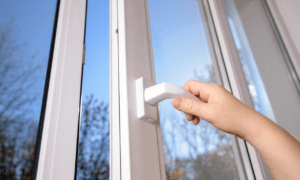
High outdoor pollen levels can easily find their way into your home if windows and doors are left open. Keeping them closed during peak pollen season creates a barrier against allergens, reducing indoor exposure.
4. Use High-Efficiency Filters:
High-efficiency particulate air (HEPA) filters in your home’s heating and cooling systems can capture airborne allergens, including pollen and mold spores. Regularly changing or cleaning the filters helps maintain their effectiveness.
5. Clean Your Home:
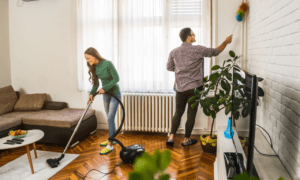
Regular cleaning is vital for reducing indoor allergens. Vacuuming with a HEPA-filter vacuum cleaner removes allergens from carpets and upholstery. Washing bedding, curtains, and rugs in hot water eliminates dust mites and allergens.
6. Dehumidify Your Home:
Mold spores thrive in damp environments, and fall can be a damp season in some regions. Using a dehumidifier to maintain indoor humidity levels between 30-50% helps prevent mold growth.
7. Avoid Outdoor Allergen Exposure:
If you must spend time outdoors during high pollen days, consider wearing a mask to reduce inhalation of allergens. After outdoor activities, shower and change your clothes to prevent allergens from entering your home with you.
8. Use Allergy-Proof Covers:
Allergy-proof covers for pillows and mattresses create a barrier that prevents dust mites and their allergens from penetrating these common sources of allergen exposure.
9. Medications:

Over-the-counter antihistamines, decongestants, and nasal corticosteroids can provide relief from allergy symptoms. Antihistamines help alleviate sneezing and itching, decongestants reduce nasal congestion, and corticosteroids reduce inflammation. Consult with your healthcare provider to determine the most suitable medications for your symptoms.
10. Allergy Shots (Immunotherapy):
Allergy shots, also known as immunotherapy, may be recommended by an allergist if your allergies are severe or not effectively managed with medications. This treatment involves gradually exposing your immune system to allergens to build tolerance over time.
11. Consult an Allergist:
If your fall allergy symptoms are severe, persistent, or not well-controlled with over-the-counter medications, consider seeing an allergist. They can conduct allergy tests to identify your specific allergens and develop a personalized treatment plan.
12. Plan Outdoor Activities:
Scheduling outdoor activities during times when pollen counts are lower can help reduce exposure. Early mornings and post-rain periods often have lower pollen levels.
13. Healthy Lifestyle:
Maintaining a healthy lifestyle, including a balanced diet, regular exercise, and adequate sleep, can support your immune system in managing allergies. A healthy immune system may be better equipped to handle allergens.
14. Stay Hydrated:
Drinking sufficient water helps thin mucus and reduces congestion, making it easier to breathe and alleviating discomfort associated with fall allergies.
15. Consider Natural Remedies:
Some individuals find relief from allergies through natural remedies like saline nasal rinses, herbal teas (e.g., peppermint or chamomile), and local honey. Discuss these options with your healthcare provider before using them as a primary form of treatment.
By following these tips, you can better prepare for the fall allergy season and take steps to reduce your exposure to allergens, alleviate symptoms, and improve your overall quality of life during this time.
Allergy-Proofing Your Home:
Creating an allergy-friendly environment at home can significantly reduce your exposure to fall allergens. Consider the following strategies:
Use high-efficiency particulate air (HEPA) filters in your HVAC system.
Keep windows closed to prevent pollen from entering your home.
Clean and vacuum your home regularly.
Wash your bedding and curtains in hot water to remove allergens.
Medications and Treatment:
Over-the-counter antihistamines and decongestants can provide relief from allergy symptoms. Discuss with your healthcare provider to determine the best treatment options for your specific needs. Prescription medications are available for severe cases.
Natural Remedies:
For those who prefer natural remedies, consider using local honey, which may help build tolerance to local allergens. Saline nasal rinses can also provide relief by flushing allergens from your nasal passages.
The Importance of Allergy Testing:
Allergy testing is essential for pinpointing your specific allergens. Skin tests and blood tests can identify the triggers, allowing for more targeted treatment.
Allergy Shots:
Immunotherapy, commonly known as allergy shots, can provide long-term relief by desensitizing your immune system to allergens. These injections are administered regularly under the supervision of a healthcare professional.
Fall Allergies in Children:
Fall allergies can be particularly challenging for children. If your child is prone to allergies, consult a pediatric allergist for advice on symptom management and allergy testing.
Managing Fall Allergies at School and Work
For students and professionals, fall allergies can be disruptive. Communicate with teachers, employers, and coworkers about your allergies to make necessary accommodations. Stay organized to minimize disruptions in your daily routine.
Coping with Severe Allergies:
If you have severe allergies, it’s important to have an action plan in place. Consult with an allergist and have emergency medication readily available. Knowing when to seek medical attention is crucial.
Fall Allergies vs. COVID-19:
It’s important to differentiate between fall allergy symptoms and those of COVID-19. Allergies typically don’t cause fever or severe body aches, which are common symptoms of viral infections. If in doubt, consult with a healthcare professional for guidance.
Enjoying Fall Despite Allergies:
While fall allergies can be challenging, they shouldn’t stop you from enjoying the season. Engage in outdoor activities that minimize allergen exposure, such as hiking in the mountains, where pollen counts are lower.
Conclusion
Fall allergies may be a seasonal inconvenience, but with the right preparation and management, you can still relish the beauty of autumn. By taking proactive steps, utilizing treatment options, and staying informed, you can minimize the impact of ragweed, mold, and other allergens on your daily life.
FAQs About Ragweed, Mold & More: Get Ready for Fall Allergies
What are common fall allergens?
Common fall allergens include ragweed pollen, mold spores, dust mites, and pet dander.
When does ragweed pollen season typically occur?
Ragweed pollen season usually peaks in late summer and early fall, with the highest concentrations often in September.
How can I find out if I’m allergic to ragweed or other fall allergens?
An allergist can perform tests, such as skin prick tests or blood tests, to determine specific allergens that trigger your allergic reactions.
What are the symptoms of ragweed allergies?
Ragweed allergies can cause symptoms like sneezing, runny or stuffy nose, itchy or watery eyes, and throat irritation.
What health issues can mold spores trigger in fall?
Mold spores can exacerbate allergies, leading to symptoms similar to ragweed allergies. Additionally, mold exposure may cause respiratory issues and sinusitis.
How can I reduce exposure to fall allergens indoors?
Keeping windows and doors closed, using air purifiers, and regularly cleaning your home can help reduce indoor exposure to fall allergens.
Are there over-the-counter medications for fall allergies?
Yes, you can find over-the-counter antihistamines, decongestants, and nasal corticosteroids that can help alleviate fall allergy symptoms.
When should I see an allergist for fall allergies?
Consider seeing an allergist if your symptoms are severe, persistent, or not effectively managed with over-the-counter medications. Allergists can diagnose specific allergens and provide personalized treatment options.
Can I get allergy shots for fall allergies?
Allergy shots, or immunotherapy, may be recommended by an allergist if your allergies are severe or not well-controlled with medications.
How can I monitor pollen counts during the fall?
Many websites, weather apps, and local news stations provide daily pollen forecasts, helping you stay informed about local pollen levels.
What should I do to reduce mold exposure in my home during the fall?
Using a dehumidifier to maintain indoor humidity levels between 30-50% can help prevent mold growth. Regular cleaning and fixing leaks are also essential.
What are some lifestyle changes I can make to better manage fall allergies?
A healthy lifestyle, including a balanced diet, regular exercise, and adequate sleep, can support your immune system in managing allergies.
Can natural remedies help with fall allergies?
Some individuals find relief from allergies through natural remedies like saline nasal rinses, herbal teas, and local honey. Discuss these options with your healthcare provider.
When are pollen levels typically lower during the day?
Pollen levels are often lower in the early morning and after rain, making these times better for outdoor activities if you have fall allergies.
Are there any long-term treatments for fall allergies?
Allergy shots (immunotherapy) can provide long-term relief for fall allergies by desensitizing your immune system to specific allergens.
These frequently asked questions should provide you with valuable information about fall allergies and how to prepare for and manage them effectively. If you have specific concerns or require personalized advice, consult with an allergist or healthcare provider.

